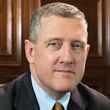President's Message: The Economic Recovery—America's Investment Problem
According to the National Bureau of Economic Research, the Great Recession officially began during the fourth quarter of 2007 (December 2007) and ended during the second quarter of 2009 (June 2009). Subsequently, the U.S. economy has recovered slowly, despite many policy actions aimed at stimulating economic activity. Given the financial crisis, as well as the apparent real estate bubble and its subsequent collapse during the 2000s, the pace of the recovery is not surprising, especially when one looks at investment data. This raises questions about how we should be evaluating the current economy's performance.
If we define recovery as real (i.e., inflation-adjusted) gross domestic product (GDP) having surpassed its previous peak level, which happened in the third quarter of 2011, then the economy has recovered from the recession. Most of the major components of real GDP have also recovered to their levels during the previous peak.
On the consumption side, real personal consumption expenditures are actually higher now than they have ever been. In addition, real government expenditures are higher than their 2007:Q4 level, despite the fact that state and local government spending has been declining in recent years. Real exports are higher as well, while real imports are roughly the same as they were in 2007:Q4.
The glaring exception in the recovery, however, involves the path of investment spending. Real private investment remains roughly 16 percent below its level during the previous business cycle peak. If investment had recovered to the extent that consumption has, GDP would have been an estimated 4.4 percent (or nearly $670 billion in current dollars) higher in 2011:Q3 than the actual data show.[1]
Within investment, the components that have not recovered are those related to real estate. In 2011:Q3, real private residential investment (the housing side) was 38 percent lower and real private nonresidential investment in structures (the commercial side) was 28 percent lower than their 2007:Q4 levels. These two components declined during the 2007-09 recession and have simply remained low. Real investment in equipment and software, on the other hand, was 2 percent higher in 2011:Q3 than its previous peak level. Collectively, these data support the view that a real estate bubble collapsed.
The U.S. economy experienced overinvestment in housing that was driven to a significant degree by beliefs that housing prices would continue to rise. As a result, too many resources were allocated to the housing sector, creating a bubble that lasted from roughly 2001 to 2007. The effects were not limited to the housing sector, though; extra resources also went to businesses that support that sector, such as those in manufacturing, transportation and retail. Consequently, GDP temporarily grew more rapidly during this period than it otherwise would have. The rapid growth was ultimately unsustainable: The bubble burst and led to a large recession.
In the aftermath of the collapsed bubble, it is not reasonable to expect economic output and, in particular, the components of investment related to housing to return quickly to their previous business cycle peak levels. Because of the overinvestment during the 2000s, the U.S. economy now has high inventories of houses and commercial real estate. Given this overabundance, it will take time and economic growth before substantial amounts of new investment in houses and commercial real estate occur.
In general, 2007:Q4 should not be used as the benchmark for where the economy is supposed to be now, precisely because part of the economic activity during the previous decade was due to artificial growth driven by a bubble. A more appropriate assessment of today's economic performance would focus on underlying trend growth, thereby excluding growth caused by the bubble. To illustrate, real GDP grew at an annual rate of 2.7 percent per quarter, on average, during the 2002-2007 expansion. The nonbubble trend growth rate during that period would have been lower—for instance, 2.4 percent. This is the average growth rate since the Great Recession ended; thus, it does not include a real estate bubble. Many analyses simply compare today's economy to where it would be had it continued to grow at the higher rate. It would be more appropriate, however, to compare today's economy to one that grew steadily at the lower, nonbubble trend rate.
The latter comparison may still indicate that economic output remains below its potential, but it would not be as far below as the former would suggest. Which comparison is used has important implications for monetary policy. Moreover, policymakers must be careful not to reinflate the bubble because, as we have seen, such growth is not sustainable and can lead to poor economic outcomes upon its collapse. [2],[3]
Endnotes
- This estimate was based on my own calculation. The Bureau of Economic Analysis provides data on GDP and its components. [back to text]
- For more discussion, see my speeches on July 29, 2011, "Views on the U.S. Economy: A Four-Part Story," and Sept. 26, 2011, "America's Investment Problem and Monetary Policy." See http://research.stlouisfed.org/econ/bullard/pdf/Bullard3rdRockyMountainEconomicSummit29July2011Final.pdf and http://research.stlouisfed.org/econ/bullard/pdf/Bullard_MGA_September26_2011_Final.pdf [back to text]
- For related reading, see Peralta-Alva, Adrian. "Construction and the Great Recession," Economic Synopses, No. 35, 2011. Also, see Sánchez, Juan M.; and Thornton, Daniel L. "Why Is Employment Growth So Low?" Economic Synopses, No. 37, 2011. See http://research.stlouisfed.org/publications/es/11/ES1135.pdf and http://research.stlouisfed.org/publications/es/11/ES1137.pdf [back to text].
Views expressed in Regional Economist are not necessarily those of the St. Louis Fed or Federal Reserve System.
For the latest insights from our economists and other St. Louis Fed experts, visit On the Economy and subscribe.
Email Us


